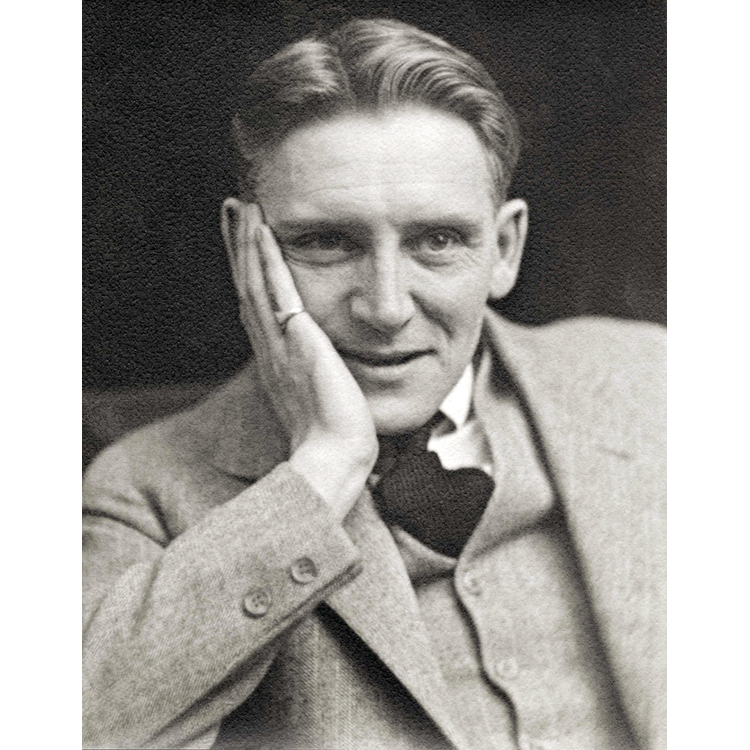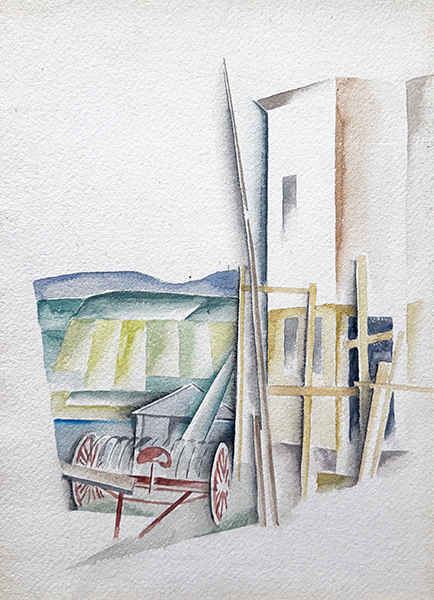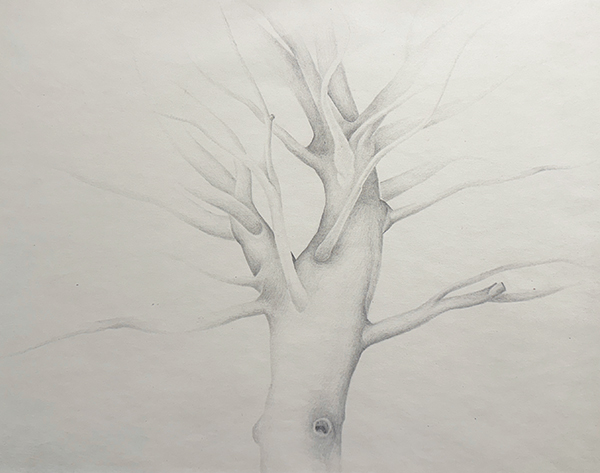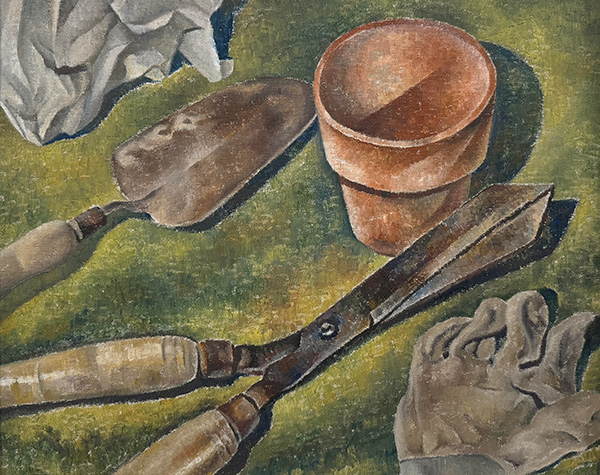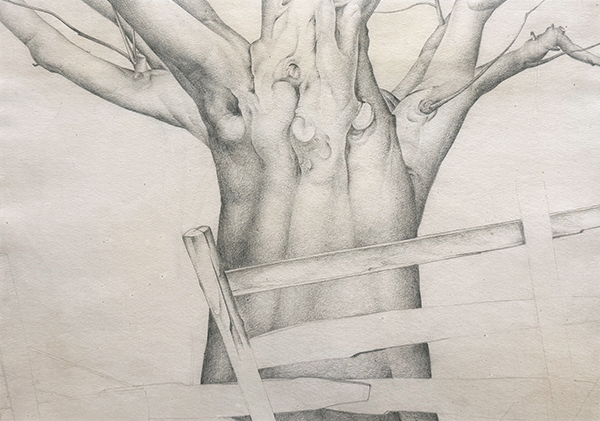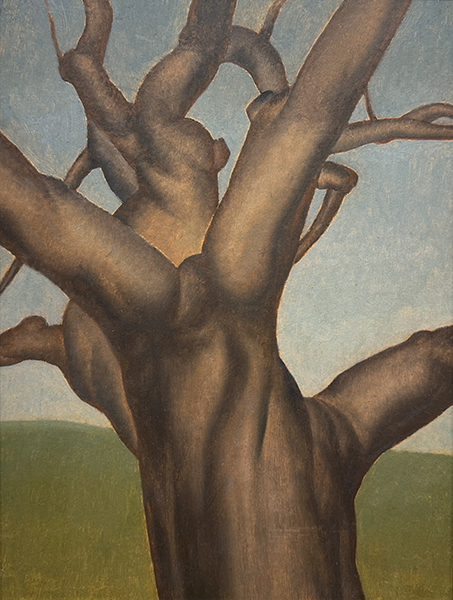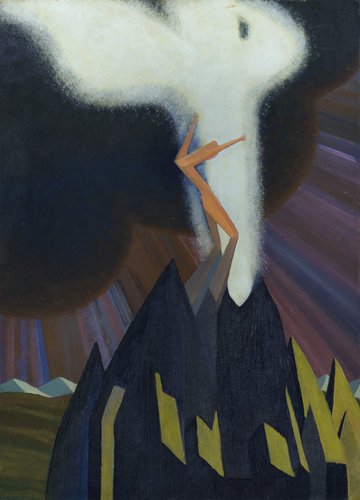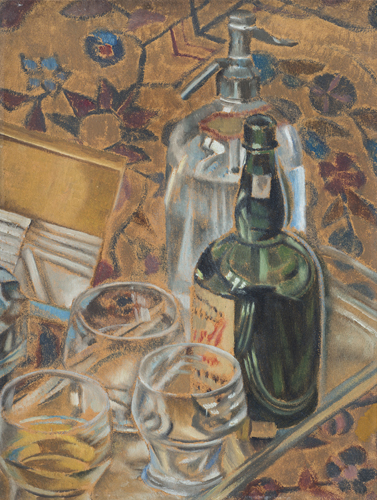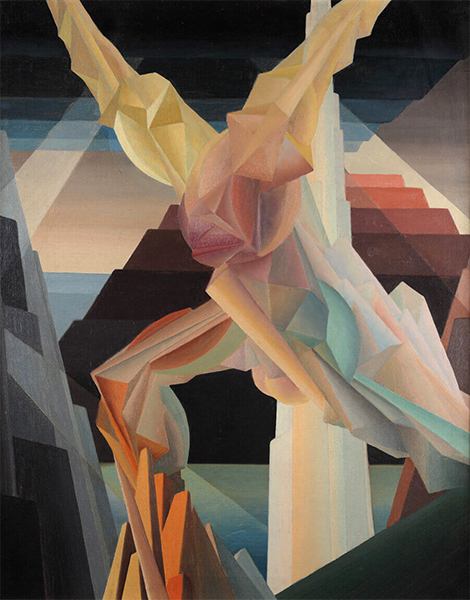Bertram Brooker
Bertram Brooker (1888-1955) – Biography
Bertram Brooker, to the degree that he passionately pursued virtually all of the arts and excelled in a number of them, is a unique Canadian cultural figure. He was also a trail-blazer; one of the earliest Canadians to contribute to the nascent film industry, the winner of the first Governor-General’s Award for literature, the first painter in Canada to present an exhibition of abstract art; and throughout all of this active as a journalist and prominent in the advertising industry. His life is a truly remarkable story.
Born in Croydon, England, in 1888, he emigrated to Canada with his family in 1905, settling in Portage la Prairie, Manitoba, where he worked for the Grand Trunk Pacific Railway for six years. In 1921 he moved to Toronto to become editor of Marketing magazine, the trade journal of the Canadian advertising industry. He purchased the magazine in 1924, then sold it in 1926, working as a freelance journalist to support himself. Although he seems always to have been interested in drawing and painting and certainly practiced graphic design in his advertising work, the lively art scene then in Toronto began to engage him more deeply in such pursuits. This began in May 1923 when he joined the Arts & Letters Club where he met, among others, a number of the members of the Group of Seven. He and Lawren Harris in particular, with whom he shared a deep interest in the spiritual dimensions of life and art, developed a close relationship. The relative flexibility of freelance journalism allowed him to devote a good portion of his time to painting and this resulted in a remarkable sequence of abstract paintings in the late ‘twenties. Impressed by such work, Arthur Lismer sponsored an exhibition at the Arts & Letters Club in January 1927, the first exhibition of abstract painting by a Canadian artist. It appears to have been received with considerable interest, although not everyone was impressed. J.E.H. MacDonald felt that such work belittled painting’s capacity to reflect the direct experience of life. Nonetheless, Brooker was invited to be a guest contributor to the 1928 Group of Seven exhibition, showing two of his abstracts.
The stock-market crash in 1929 and subsequent economic depression put a huge stress on financial resources, however, and late in 1930 Brooker took a full-time position with J.J. Gibbons, a Toronto-based advertising firm. While this meant that he did not have as much time for painting it does not seem to have significantly impacted his creativity in that field. His work, in fact, had taken quite a dramatic turn. The summer of 1929 he had met the Winnipeg painter LeMoine FitzGerald, and the two became life-long friends. Brooker turned to figurative painting with a passion, creating a series of sensuous studies of tree-branches inspired by FitzGerald’s work. Even though they evoke human limbs and torsos in a manner that directly emulates FitzGerald, they are executed with such conviction, such passion, that they generate an originality that is all their own. And they also broadened Brooker’s scope, leading to a range of figurative explorations that allowed him to fully exploit his remarkable sense of form and colour in a wonderfully creative way.
Brooker’s energy was remarkable. In November 1940 he left Gibbons for a full-time position with the MacLaren Advertising Company, a major Toronto firm that he remained with to near the end of his life, serving latterly as vice-president. He still remained active in his other fields, however. He had one more exhibition at Hart House in 1942, and another at the Arts & Letters Club in 1947, and in 1949 brought out a novel, The Robber, with Collins in Toronto. Most amazingly, though, he continued to work through his painting in an increasingly personal way, exploring a wide range of possibilities with notable success. While he continued to explore a more geometric figurative abstraction of colour and form evocative of his work of the late ‘twenties, he also moved into new areas of semi-abstraction in which the paint appears to have been applied in part with a palette knife. Other works go even further into new territory, displaying a number of images delicately meshed together with a skilled designer’s hand exploring the ways throughout history that time has been recorded. It is perhaps not surprising that time was on his mind. He died in March 1955. -Dennis Reid for Gallery Gevik, March 2014
Major Exhibitions:
1927: Bertram Brooker, the Arts and Letters Club of Toronto.
1928: Two Brooker paintings, including Sounds Assembling, were exhibited with works by the Group of Seven. Brooker also showed with the Group in 1930 and 1931.
1929: Art Gallery of Ontario - Brooker showed three paintings and a supplementary exhibition, Drawings by Bertram Brooker, consisted of forty items.
1931: Bertram Brooker Abstractions, Hart House Art Gallery, University of Toronto.
1935: An Exhibition of Drawings by Kathleen Munn, LeMoine Fitzgerald, Bertram Brooker, Galleries of J. Merritt Malloney, Toronto.
1937: Bertram Brooker, Picture Loan Society, Toronto.
1942: Bertram Brooker, Hart House Art Gallery, University of Toronto
1947: Bertram Brooker, the Arts and Letters Club of Toronto.
1949: Bertram Brooker, Hart House Art Gallery, University of Toronto.
1956: Bertram Brooker, O.S.A. (1888–1955), Art Gallery of Ontario, Toronto.
1971: Bertram Brooker, 1888–1955, The Morris Gallery, Toronto.
1972–73: Bertram Brooker: A Retrospective Exhibition, National Gallery of Canada, Ottawa (travelled to the Sarnia Public Library and Art Gallery; London Public Library and Art Museum, Ontario; Sir George Williams University, Montreal; Confederation Art Gallery and Museum, Charlottetown; Winnipeg Art Gallery; Art Gallery of Greater Victoria; Regina Public Library; and Hart House, University of Toronto).
1975: L.L. FitzGerald and Bertram Brooker: Their Drawings, Winnipeg Art Gallery.
1990: The Logic of Ecstasy: Canadian Mystical Painting 1920-1940 (group exhibition), London Regional Art and Historical Museums (travelled to the Art Gallery of Greater Victoria; Edmonton Art Gallery; Mendel Art Gallery, Saskatoon; Beaverbrook Art Gallery, Fredericton; and Dalhousie Art Gallery, Halifax).
2009: It’s Alive! Bertram Brooker and Vitalism, Art Gallery of Windsor (travelled to the Agnes Etherington Art Centre, Kingston, and Museum London, Ontario).
Selected Permanent Collections:
Art Gallery of Alberta, AB
Art Gallery of Hamilton, ON
Art Gallery of Ontario, Toronto ON
Art Gallery of Windsor, ON
British Museum, London, UK
McMichael Canadian Art Collection, Kleinburg, ON
Montreal Museum of Fine Arts, QC
Museum London, ON
National Gallery of Canada, Ottawa, ON
The Robert McLaughlin Gallery, Oshawa, ON
Vancouver Art Gallery, BC
Winnipeg Art Gallery, MB
Artist Specialization: A pioneer of abstracted painting in Canada, Brooker’s artwork over the course of his career broadly retain a figurative element, but remain boldly abstract, employing form and colour to explore deep layers of meaning in their apparent narratives. Brooker compared his approach to the richly nuanced messages conveyed by music.
